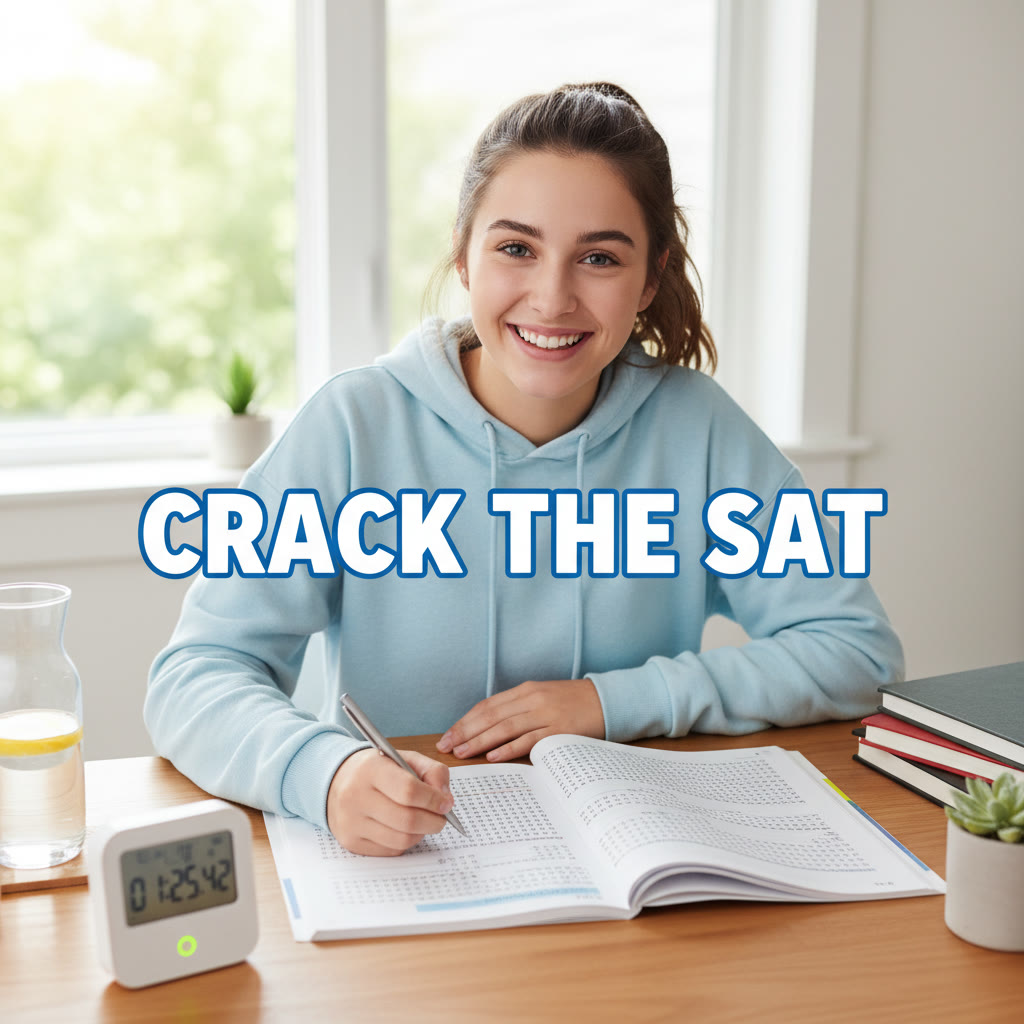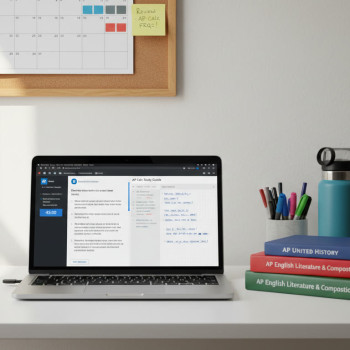How to Stay Disciplined During Long SAT Study Plans
Studying for the SAT is more of a marathon than a sprint. When you commit to a long study plan—months of focused practice, timed tests, and content review—the real challenge is staying disciplined day after day. Motivation comes and goes, life gets busy, and what looks like good intentions on Monday can dissolve by Thursday. The good news: discipline is a skill you can build. With the right mindset, structure, and a few practical tools, you can stay consistent, make steady progress, and arrive at test day confident.
Start with Why: Purpose Powers Discipline
Before you outline a schedule or download practice tests, ask yourself: why am I taking the SAT? Your answer could be practical—earning scholarship money or meeting college requirements—or more personal, like proving to yourself you can master a difficult challenge. Write that purpose down and keep it visible. This isn’t fluff; neuroscience shows that linking daily tasks to a meaningful goal strengthens motivation and makes self-control easier to sustain.
Concrete purpose statements to try
- “I want a 1500 to open scholarship opportunities for state and private schools.”
- “I want to show I can balance academics and extracurriculars to competitive colleges.”
- “I want to learn test-taking strategies that will also help in college coursework.”
When purpose is clear, discipline feels less like punishment and more like progress toward something you care about.
Build a Sane, Sustainable Schedule
Long study plans fail when they’re unrealistic. A hundred-hour plan packed into two weeks will cause burnout. Start by mapping the time you actually have each week. Be honest: count classes, sports, jobs, family time, and sleep. Then identify consistent windows—those are your anchors.
A realistic weekly routine
Two hours on weekdays and three to four hours on weekends can add up fast. Consistency beats marathon sessions. Here’s a sample weekly structure most students can adapt:
| Day | Study Time | Focus |
|---|---|---|
| Monday | 1.5–2 hours | Practice: Math (algebra & problem solving) |
| Tuesday | 1.5–2 hours | Reading: passage strategy & vocab in context |
| Wednesday | 1.5–2 hours | Writing & Language: grammar patterns |
| Thursday | 1.5–2 hours | Mixed practice: timed sections |
| Friday | 1 hour | Review errors & flashcards |
| Saturday | 3–4 hours | Full practice test or focused problem set |
| Sunday | 2–3 hours | Review test, targeted lessons, rest |
This table is a starting point—not a rulebook. Adjust for your energy, school load, and commitments.
Block Your Time Like a Pro
Discipline often breaks down because time is vague. Replace vague with concrete blocks. Use 25–50 minute focused sessions with short breaks; experiment to find your sweet spot. The Pomodoro technique (25 minutes work + 5 minutes break) is popular because it reduces decision fatigue: you only commit to a short burst of focus.
Sample study block
- 25 minutes: Focused practice on a reading passage or algebra set
- 5 minutes: Stand up, stretch, hydrate
- 25 minutes: Review mistakes and jot strategy notes
- 10 minutes: Quick recap, schedule for next block
Batch similar tasks. If you’re doing math, do multiple problem sets in one block instead of switching back and forth to reading. Batching reduces context switching, which is a silent productivity killer.
Make Your Plans Visible and Track Progress
Out of sight is out of mind. Put your weekly plan somewhere you see it every day. A paper planner, a whiteboard by your desk, or a digital calendar with reminders—choose what you’ll actually use. Pair it with tracking: logging what you did helps you notice patterns and celebrate small wins.
Simple tracking table
| Week | Planned Hours | Actual Hours | Primary Focus | Notes |
|---|---|---|---|---|
| Week 1 | 10 | 9 | Foundations & diagnostics | Got extra practice on algebra |
| Week 2 | 12 | 12 | Timed reading practice | Improved timing on passages |
Review your tracker weekly and adjust. If you consistently miss blocks, ask why: are your blocks too long? Is the time of day wrong? Are distractions overwhelming you?
Design an Environment That Invites Focus
Discipline is easier when friction is removed. An environment that supports studying isn’t just tidy; it anticipates problems and prevents them.
Environment checklist
- Minimal visual clutter and a clean surface
- Phone out of reach or on Do Not Disturb; notifications off
- Good light and a comfortable chair to avoid fatigue
- Water bottle and a small snack nearby
- Study materials organized: practice books, scratch paper, calculator
Small rituals prime your brain. Consider lighting a small lamp, opening a dedicated notebook, or playing low-volume instrumental music when you begin a block. Over time, these cues trigger focus automatically.
Use Feedback Loops: Practice Tests and Error Analysis
Discipline without direction can be wasted effort. Practice tests are your compass: they show progress and pinpoint weaknesses. But the key is not only taking tests—it’s analyzing them.
How to analyze a practice test
- Score the test and note section breakdowns (Reading, Writing, Math).
- Mark every missed question and label the reason: careless error, timing, content gap, or strategy mistake.
- Create a focused plan to fix the top two categories of errors for the next week.
- Retest those specific topics with mini-quizzes until accuracy improves.
For example, if a chunk of Math problems are from geometry, plan two focused sessions on geometry concepts and targeted problems. Concrete correction + repetition builds durable learning.
Keep Motivation Fresh with Micro-Goals and Rewards
Big goals are inspiring but distant. Micro-goals keep momentum. Celebrate small wins so discipline feels positive rather than punitive.
Micro-goal examples and rewards
- Complete three timed reading passages this week → reward: coffee with a friend
- Reduce careless errors on algebra by half in two weeks → reward: movie night
- Finish a full practice test on Saturday → reward: an extra hour of relaxed activity on Sunday
Pick rewards that recharge you. Rest and social connection are often the most powerful reinforcements.
Guard Against Burnout
Burnout is the enemy of long-term discipline. It creeps in as fatigue, cynicism, or avoidance. Preventing it is as important as building study habits.
Burnout prevention tactics
- Schedule at least one full day off each week from SAT work.
- Mix up study modes: alternate problem sets with videos, tutoring sessions, or flashcards.
- Prioritize sleep: inadequate sleep undermines memory and focus.
- Stay active: short, regular movement boosts cognition.
If you notice declining concentration, the best move is often rest, not doubling down. A refreshed brain is far more productive than a tired one grinding slowly.
Accountability: Your Secret Weapon
Humans are social creatures. We stick to plans better when others expect us to. Accountability can be formal or informal—what matters is consistency.
Accountability options
- Study partner or group for weekly check-ins
- A coach or tutor who reviews your practice tests and holds you to deadlines
- Public commitments: tell a friend or family member your weekly plan
Many students find a mix works best. A reliable tutor or coach can be especially effective: they provide structure, targeted feedback, and encouragement. If you explore tutoring options, look for 1-on-1 guidance, tailored study plans, expert tutors, and AI-driven insights to make sessions efficient—Sparkl’s personalized tutoring offers those kinds of benefits in a way that can fit into a long-term plan.
Make It Enjoyable: Find the Elements You Like
If every study session feels like punishment, discipline will waver. Find elements that make it interesting: a particular type of problem you enjoy, a clever shortcut you can master, or turning review into a game. Personalize your prep so it’s not just about scores but about growth.
Ways to inject enjoyment
- Create a flashcard game with friends
- Challenge yourself to beat your own time on a passage
- Use interesting real-world examples for math problems (sports stats, budgeting, design)
When you enjoy parts of the process, discipline is sustained by curiosity rather than by sheer willpower.
Examples: Two Realistic Student Plans
Seeing concrete examples helps you craft your own plan. Here are two profiles and how they structure long-term prep.
Case A: The Busy Junior
Profile: 11th grader with sports and part-time job, target test in 5 months. Approach: Focused little and often.
- Weekdays: 60–90 minutes after dinner, alternating math and reading.
- Saturdays: Full practice test every other week; on alternate weeks, deep-dive on weak sections.
- Accountability: Weekly check-in with a tutor for targeted strategy and review.
Case B: The Intensive Senior
Profile: 12th grader taking the SAT in 8 weeks, with fewer extracurriculars. Approach: Intensive, high-frequency practice with carefully scheduled rest.
- Daily: Two focused blocks (morning and evening), one for timed practice and one for review.
- Weekly: Full practice test every Saturday, analysis on Sunday.
- Support: A mix of self-study and a couple of 1-on-1 sessions to sharpen test strategies and address stubborn content gaps.
Both plans are disciplined in different ways. The Busy Junior uses consistency around constraints, while the Intensive Senior uses higher volume with structured recovery. Either can work depending on your life and timeline.
Tools That Help Discipline Stick
Technology and tools can support habits if used deliberately. Here are practical tools and how to use them without getting distracted.
Recommended tools and best uses
- Digital calendar: Schedule study blocks and set reminders; treat blocks like appointments.
- Timer app: Use for Pomodoro or custom intervals.
- Practice test platform: Take official-style timed tests. Log results consistently.
- Note app or notebook: Keep an error log and strategy list.
Reserve social media and casual browsing for breaks. If you struggle with distraction, tools that block websites during study blocks can enforce your plan.
The Long View: Tapering and Peak Performance
Discipline isn’t all about accumulation; it’s also about timing. As test day approaches, taper your volume and prioritize quality. The week before the SAT should be about light practice, confidence-building, and sleep—not cramming new concepts.
Final two-week checklist
- Complete one full practice test each week with full review.
- Focus on polishing strategy and eliminating careless mistakes.
- Prioritize sleep and nutrition; avoid late-night marathon sessions.
- Pack logistics: test center info, calculator with fresh batteries, valid ID.
Think of the final weeks like tuning an instrument: small adjustments, rest, and confidence lead to your best performance.
When Discipline Falters: Troubleshoot Without Judgment
Everyone slips. When you miss study days, respond with curiosity instead of shame. Ask: What changed? Was the plan unrealistic? Did I run out of energy? Use the answers to adapt, not to punish yourself.
Quick troubleshooting steps
- Shorten study blocks if attention is dropping.
- Move sessions to a different time of day when you have more energy.
- Bring in accountability or expert help for stubborn problems.
- Reframe: missing one week is a setback, not a catastrophe. Restart immediately.
Many students find bringing in guided support—regular check-ins with a tutor who provides personalized feedback and a tailored study plan—helps them get back on track. Sparkl’s personalized tutoring, for example, blends 1-on-1 guidance, tailored plans, expert tutors, and AI-driven insights to keep pacing realistic and productive.
Final Thoughts: Discipline Is Built, Not Found
Discipline during long SAT study plans doesn’t come from heroic willpower. It’s the product of designing your environment, scheduling realistic blocks, tracking progress, getting feedback, and treating yourself with the same curiosity you’d offer a friend. Build systems that reduce friction, celebrate small wins, and allow for rest. When you do, staying disciplined becomes easier—and your prep becomes smarter.
Start small this week: pick one consistent study window, commit to it three times, and track the results. That tiny habit is the seed of steady improvement. Over months, those seeds grow into the confidence and performance you want on test day.



















No Comments
Leave a comment Cancel